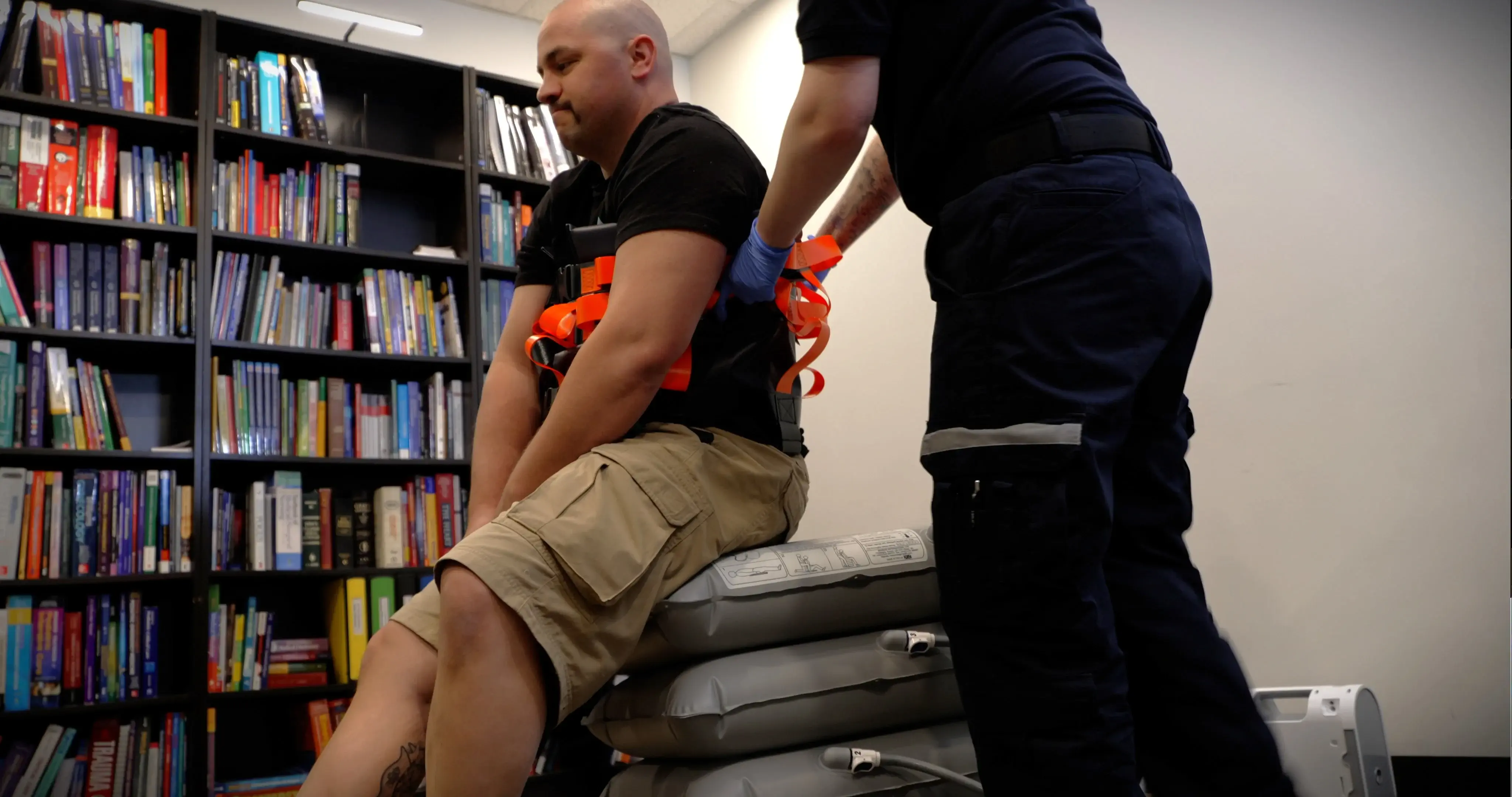TRAINING RESOURCES FOR PHASE PRODUCTs
The training resources found on this page will teach emergency care providers HOW to properly use the patient handling equipment we provide.
To learn WHEN to use the equipment and earn free CEUs, check out our accredited online patient handling course, Mastering Patient Handling - Move Patients of Any Size Safely and Easily.
All personnel must watch the training video, review the written instructional guides, and practice with equipment before utilization in the field.
Binder Lift Training

Overview
We strongly urge you to lift a fellow team member before putting it to use in the field. Although the Binder Lift is designed to help you utilize better lifting ergonomics, it is important that each lifter is in sufficient physical condition to conduct a patient lift with proper ergonomics.
Although very simple to use, there are necessary skills to understand before using these devices on your patients.
Binder Transfer Training

Overview
The Binder Transfer is designed to assist emergency care providers with the transfer of a patient from the stretcher to another surface. Once deployed on the stretcher, it should be used with every lateral transfer. Transferring a patient without unbuckling the transfer may lead to adverse events, such as damage to the device.
Although very simple to use, there are necessary skills to understand before use.
Written Instructional Guide
This guide is designed to provide step-by-step instructions, safety protocols, and essential tips for effectively utilizing the Binder Transfer with Stryker and Ferno Stretchers.
Download Guide
Stryker Pro XT and Pro 2 Anchor Placement Guide
The anchor placement guide shows the recommended Binder Transfer anchor attachment points for Stryker Pro XT and Pro 2 stretcher models.
Download Guide
Mangar Elk Training

Overview
Although very simple to use, there are necessary skills to understand before using these devices on your patients. We strongly urge you to lift a fellow team member before using it in the field. Although the Mangar Elk is designed to lift the patient to a seated position for you, it is still important that each caregiver is in sufficient physical condition to assist the patient as necessary.
An assistive device, such as the Binder Lift, should be used anytime the patient needs manual assistance or stabilization.
XDCuff Training

Overview
Although very simple to use, there are necessary skills to understand before using these devices on your patients. We strongly urge you to restrain a fellow team member before using it in the field. The XDcuff limb restraint positions are based on ambulance layout, stretcher design, and common methods utilized in EMS. Final patient positioning/restraint techniques should be determined by your lead medical authority.
ALWAYS follow your local guidelines and protocols when treating uncooperative patients.
Emergency Child Restraint Training

Overview
The Emergency Child Restraint is designed for use only in an emergency setting and only by suitably trained personnel.
The Emergency Child Restraint is for professional use by one or more trained operators. The Emergency Child Restraint is not designed as an immobilization device and should not be used to immobilize the patient, or as part of an immobilization system. Always follow your local guidelines and protocols when transporting pediatric patients.
